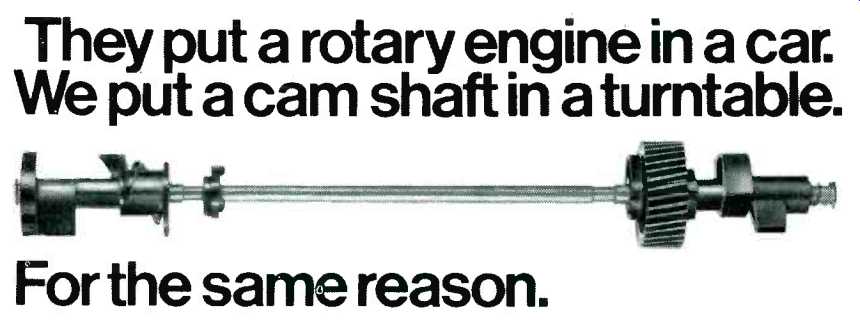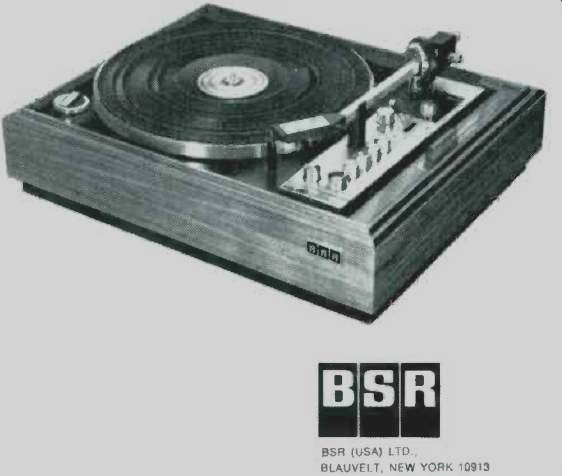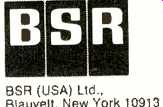They put a rotary engine in a car.
We put a cam shaft in a turntable.

For the same reason.
The reason? To make it quieter, smoother, more reliable.
The basic record changer mechanism-like the automobile's piston engine-has been a fairly reliable device that has served with some success for many years. But the very action of the engine-or the changer-produces constant vibration and strong, sudden movements that can ultimately wear it out.
Now we have alternatives. For cars, the Wankel rotary engine.
And for record players, the sequential cam shaft drive mechanism used in BSR's finest automatic turntables.
It’s even rotating motion programs the complex automatic functions of the BSR 710 and 810 smoothly and without noisy and potentially harmful quick starts and stops, without slamming metal against metal. And because the cam gears are mounted on a carefully machined central shaft, they are all but impossible to put out of alignment by rough handling or constant use.
The result: consistent care-free performance, and good music. With the BSR 710/X and 810/X Transcription Series Total Turntables.

BSR
BSR ( USA) LTD. BLAUVELT, NEW YORK 10913

.
(Audio magazine, Sept. 1973 )
Also see:
BSR turntables (ad, Apr. 1974)
Ortofon M15 E Super phono cartridge (Apr. 1974), Dual turntables (Feb. 1978)
= = = =